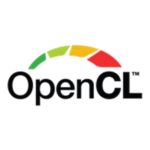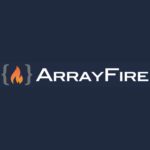[SPONSORED POST] Intel’s Partner Ecosystem with ISVs, OEMs, standards organizations, channel resellers and others are delivering amazing capabilities and products using Intel technology. Recently updated for Supercomputing ’21, the Intel HPC + AI Pavilion showcases the breadth of technology innovations that our partners have created.
Khronos Group Releases OpenCL 3.0
Today, the Khronos Group consortium released the OpenCL 3.0 Provisional Specifications. OpenCL 3.0 realigns the OpenCL roadmap to enable developer-requested functionality to be broadly deployed by hardware vendors, and it significantly increases deployment flexibility by empowering conformant OpenCL implementations to focus on functionality relevant to their target markets. Many of our customers want a GPU programming language that runs on all devices, and with growing deployment in edge computing and mobile, this need is increasing,” said Vincent Hindriksen, founder and CEO of Stream HPC. “OpenCL is the only solution for accessing diverse silicon acceleration and many key software stacks use OpenCL/SPIR-V as a backend. We are very happy that OpenCL 3.0 will drive even wider industry adoption, as it reassures our customers that their past and future investments in OpenCL are justified.”
CPU, GPU, FPGA, or DSP: Heterogeneous Computing Multiplies the Processing Power
Whether your code will run on industry-standard PCs or is embedded in devices for specific uses, chances are there’s more than one processor that you can utilize. Graphics processors, DSPs and other hardware accelerators often sit idle while CPUs crank away at code better served elsewhere. This sponsored post from Intel highlights the potential of Intel SDK for OpenCL Applications, which can ramp up processing power.
ArrayFire Releases v3.6 Parallel Libraries
Today ArrayFire announced the release of ArrayFire v3.6, the company’s open source library of parallel computing functions supporting CUDA, OpenCL, and CPU devices. This new version of ArrayFire includes several new features that improve the performance and usability for applications in machine learning, computer vision, signal processing, statistics, finance, and more. “We use ArrayFire to run the low level parallel computing layer of SDL Neural Machine Translation Products,” said William Tambellini, Senior Software Developer at SDL. “ArrayFire flexibility, robustness and dedicated support makes it a powerful tool to support the development of Deep Learning Applications.”
Call for Papers: International Workshop on Accelerators and Hybrid Exascale Systems
The eight annual International Workshop on Accelerators and Hybrid Exascale Systems (AsHES) has issued its Call for Papers. Held in conjunction with the 32nd IEEE International Parallel and Distributed Processing Symposium, the AsHES Workshop takes place May 23 in Vancouver, Canada. “This workshop focuses on understanding the implications of accelerators and heterogeneous designs on the hardware systems, porting applications, performing compiler optimizations, and developing programming environments for current and emerging systems. It seeks to ground accelerator research through studies of application kernels or whole applications on such systems, as well as tools and libraries that improve the performance and productivity of applications on these systems.”
Intel Steps up to HPC & the Enterprise with FPGAs
In this video from the Intel HPC Developer Conference in Denver, Michael Strickland describes how Intel FPGAs are powering new levels of performance and datacenter efficiency with FPGAs. “Altera and Intel offers a broad range of FPGA devices – from the high performaning Stratix series to the flexible MAX 10 – so you can find a device that best meets your business needs.”
SPEC/HPG hardware acceleration benchmark adds OpenMP Suite
Today SPEC’s High-Performance Group released a new version of its SPEC ACCEL software that adds a suite of OpenMP applications for measuring the performance of systems using hardware accelerator devices and supporting software. SPEC ACCEL also measures performance for computationally intensive parallel applications running under the OpenCL and OpenACC programming models.
The OpenMP application benchmarks are the first of their kind and now give our customers the opportunity to compare hardware configurations based on the most popular open-programming models,” says Guido Juckeland, SPEC/HPG vice chair. “We look forward to a wide variety of SPEC ACCEL result submissions on the SPEC website and a number of research papers comparing various optimization settings on multiple platforms.”
Creating Applications with the Intel Computer Vision SDK
“In order for developers to be able to focus on their application, a Vision Algorithm Designer application is included in the Intel Computer Vision SDK. This gives users a drag and drop interface that allows them to create new applications on the fly. Large and complex workflows can be modelled visually which takes the guesswork out of bringing together many different functions. In addition, customized code can be added to the workflows.”
GPUs Power New AWS P2 Instances for Science & Engineering in the Cloud
Today Amazon Web Services announced the availability of P2 instances, a new GPU instance type for Amazon Elastic Compute Cloud designed for compute-intensive applications that require massive parallel floating point performance, including artificial intelligence, computational fluid dynamics, computational finance, seismic analysis, molecular modeling, genomics, and rendering. With up to 16 NVIDIA Tesla K80 GPUs, P2 instances are the most powerful GPU instances available in the cloud.
ArrayFire v3.4 Parallel Computing Library Speeds Machine Learning
Today ArrayFire released the latest version of their ArrayFire open source library of parallel computing functions supporting CUDA, OpenCL, and CPU devices. ArrayFire v3.4 improves features and performance for applications in machine learning, computer vision, signal processing, statistics, finance, and more.












